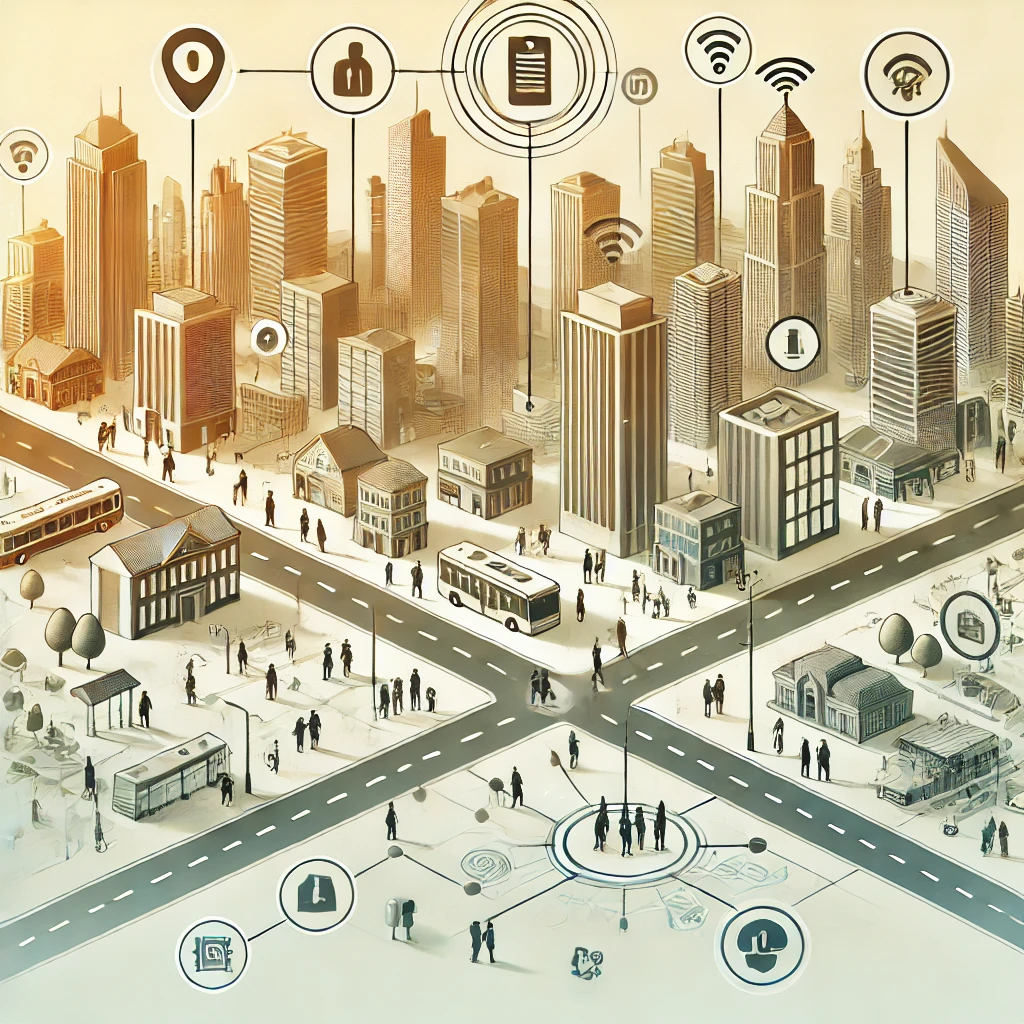Andrew Rippon
Cities are complex organisms, constantly evolving and adapting to new challenges. As climate change intensifies and urbanization accelerates, the need for resilient urban infrastructure has never been greater. Enter Artificial Intelligence (AI), a powerful tool that is revolutionizing how cities prepare for and respond to disruptions.
AI, with its ability to analyze vast amounts of data, predict future events, and optimize resource allocation, is transforming cities into intelligent and resilient hubs. From managing floods and power outages to optimizing transportation and emergency response, AI is proving to be an invaluable asset in building urban resilience.
Smart City Control Systems: The AI-Powered Command Center
Imagine a city where traffic flows smoothly, energy consumption is optimized, and emergency services respond with lightning speed. This is the promise of AI-powered smart city control systems. By integrating data from various sources, such as traffic sensors, weather stations, and social media feeds, AI can create a real-time picture of the city’s operations.
This allows city officials to:
- Predict and prevent traffic congestion: AI algorithms can analyze traffic patterns and predict potential bottlenecks, enabling proactive measures like adjusting traffic light timings or rerouting traffic flow.
- Optimize energy consumption: AI can analyze energy usage patterns and adjust energy distribution accordingly, reducing waste and improving efficiency.
- Enhance public safety: AI can detect anomalies in surveillance footage, identify potential security threats, and alert authorities in real-time.
IoT Sensors: The Eyes and Ears of a Resilient City
The Internet of Things (IoT) is a network of interconnected devices that collect and transmit data. In a smart city context, IoT sensors act as the eyes and ears, providing critical information about the urban environment.
These sensors can monitor:
- Environmental conditions: Air quality, temperature, humidity, and noise levels.
- Infrastructure health: Structural integrity of bridges, buildings, and pipelines.
- Resource usage: Water consumption, energy usage, and waste generation.
AI algorithms can then analyze this data to identify potential problems, predict future trends, and trigger automated responses. For example, sensors detecting rising water levels in a river can trigger flood warnings and activate pumps to mitigate potential damage.
Autonomous and Electric Transportation: Navigating Towards a Resilient Future
Transportation is a critical component of urban resilience. AI is playing a key role in transforming transportation systems, making them more efficient, sustainable, and resilient.
- Autonomous vehicles: Self-driving cars and trucks can optimize traffic flow, reduce congestion, and improve road safety. In the event of a disaster, autonomous vehicles can be used to evacuate people or deliver essential supplies.
- Electric vehicles: EVs reduce reliance on fossil fuels and contribute to cleaner air quality. AI can optimize charging infrastructure and manage energy consumption for EV fleets.
Decentralized Systems: Building Resilience from the Ground Up
Centralized systems are vulnerable to single points of failure. Decentralized systems, on the other hand, distribute resources and decision-making power, enhancing resilience.
AI can play a crucial role in managing decentralized systems:
- Microgrids: AI can optimize energy distribution within microgrids, ensuring a reliable power supply even during grid outages.
- Distributed sensor networks: AI can analyze data from a network of sensors to identify localized problems and trigger targeted responses.
- Community-based emergency response: AI can facilitate communication and coordination among community members during emergencies, enabling faster and more effective response efforts.
AI for Disaster Management: Preparing for the Unexpected
Extreme weather events, such as floods, hurricanes, and heatwaves, are becoming increasingly common. AI can help cities prepare for and respond to these events more effectively.
- Predictive modeling: AI algorithms can analyze historical data and predict the likelihood and severity of future events, enabling proactive measures like evacuations or resource mobilization.
- Real-time monitoring: AI can track the progress of an event and provide real-time updates to emergency responders and the public.
- Resource allocation: AI can optimize the allocation of resources, such as emergency personnel, medical supplies, and shelter space, ensuring that they are deployed where they are most needed.
The Future of Resilient Cities: AI as a Catalyst for Change
AI is not a silver bullet, but it is a powerful tool that can help cities build resilience in the face of climate change and other challenges. By embracing AI and integrating it into their infrastructure and operations, cities can create a more sustainable, secure, and resilient future for their residents.
The key lies in:
- Investing in AI research and development: Cities need to invest in developing and deploying AI solutions tailored to their specific needs and challenges.
- Building data infrastructure: AI relies on data, so cities need to invest in robust data infrastructure to collect, store, and analyze information effectively.
- Promoting collaboration: Building resilient cities requires collaboration between government, industry, and academia. AI can facilitate this collaboration by providing a common platform for sharing data and insights.
By harnessing the power of AI, cities can become more than just resilient; they can become truly intelligent, adaptive, and sustainable urban ecosystems.
